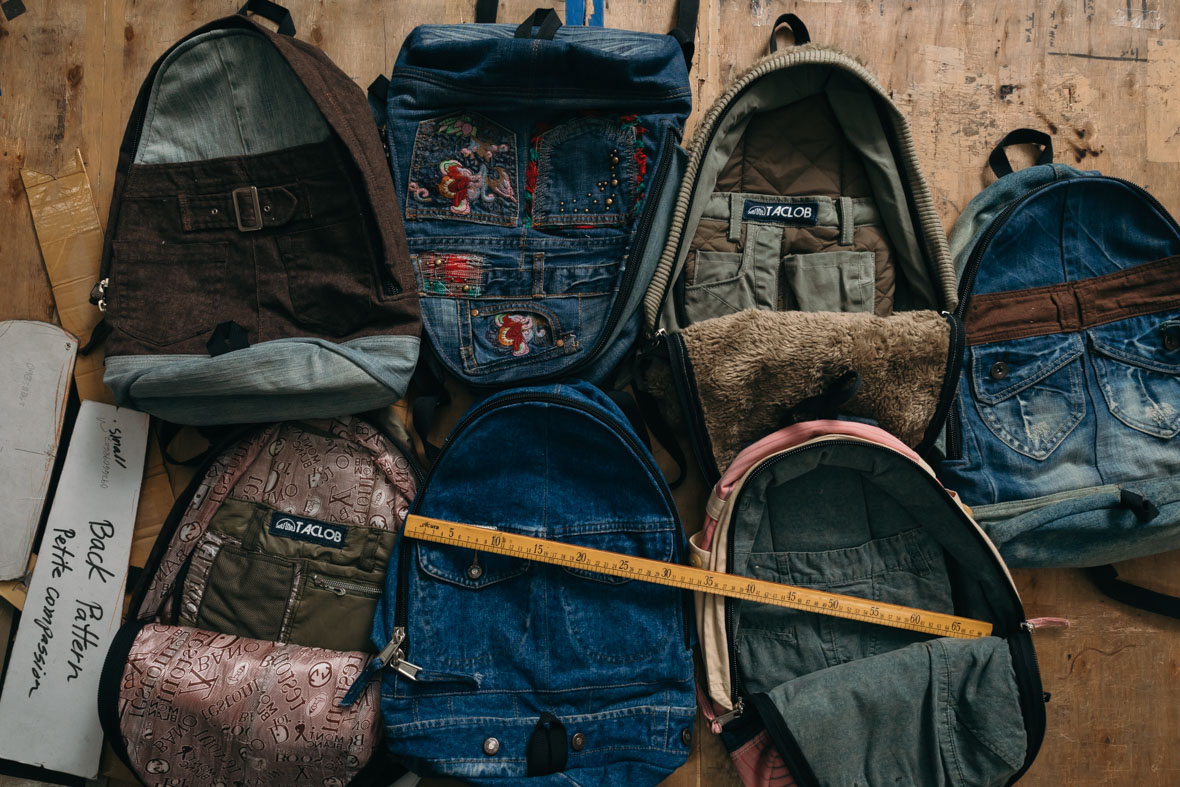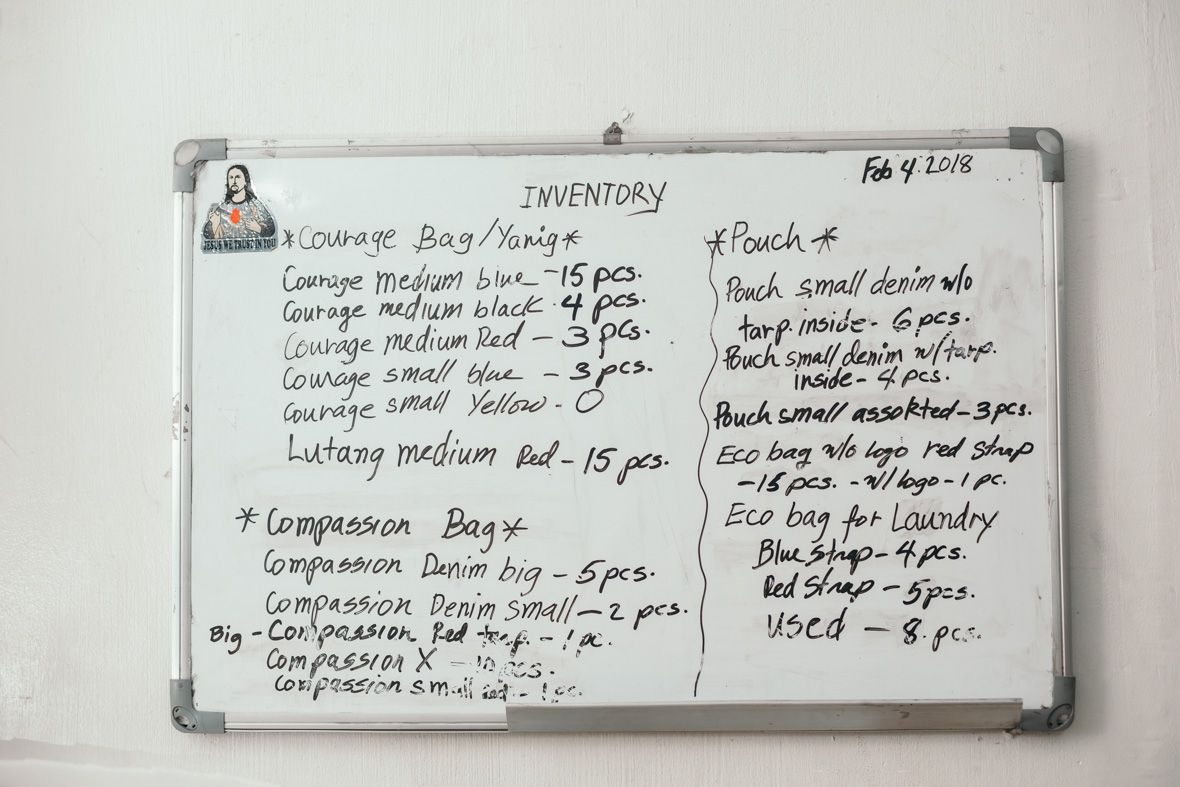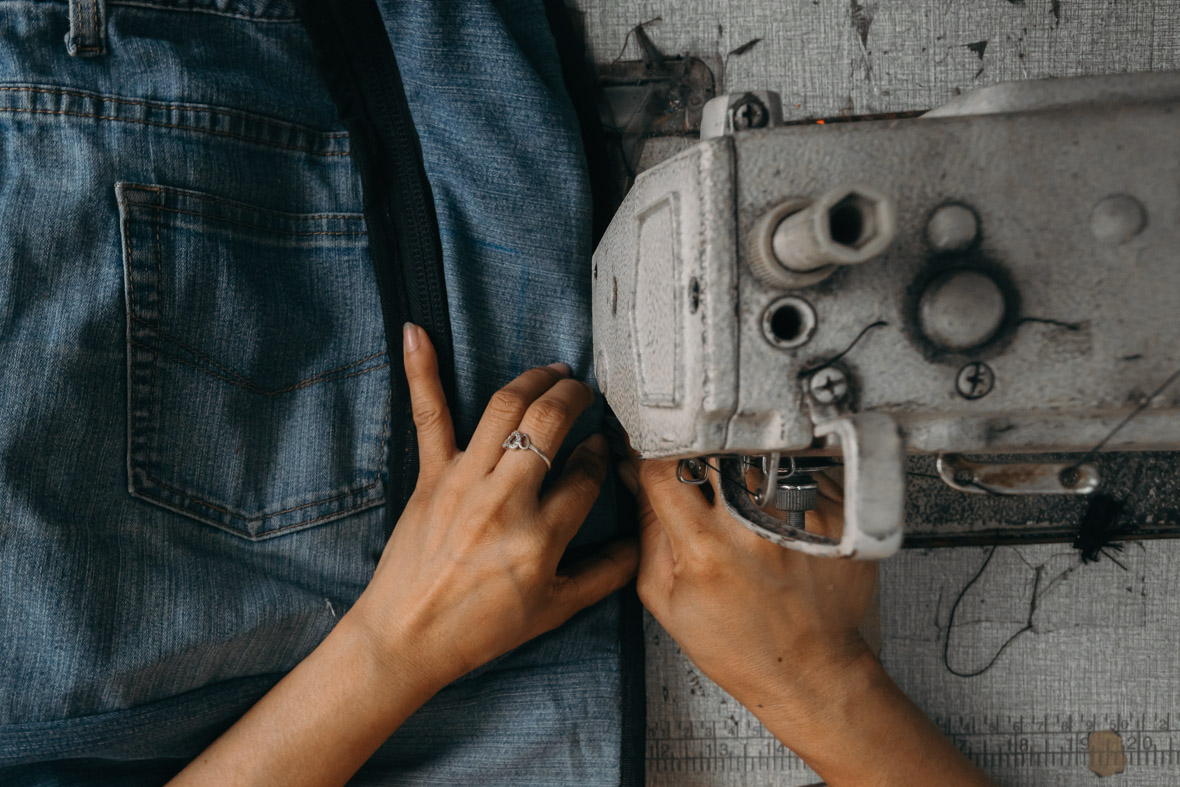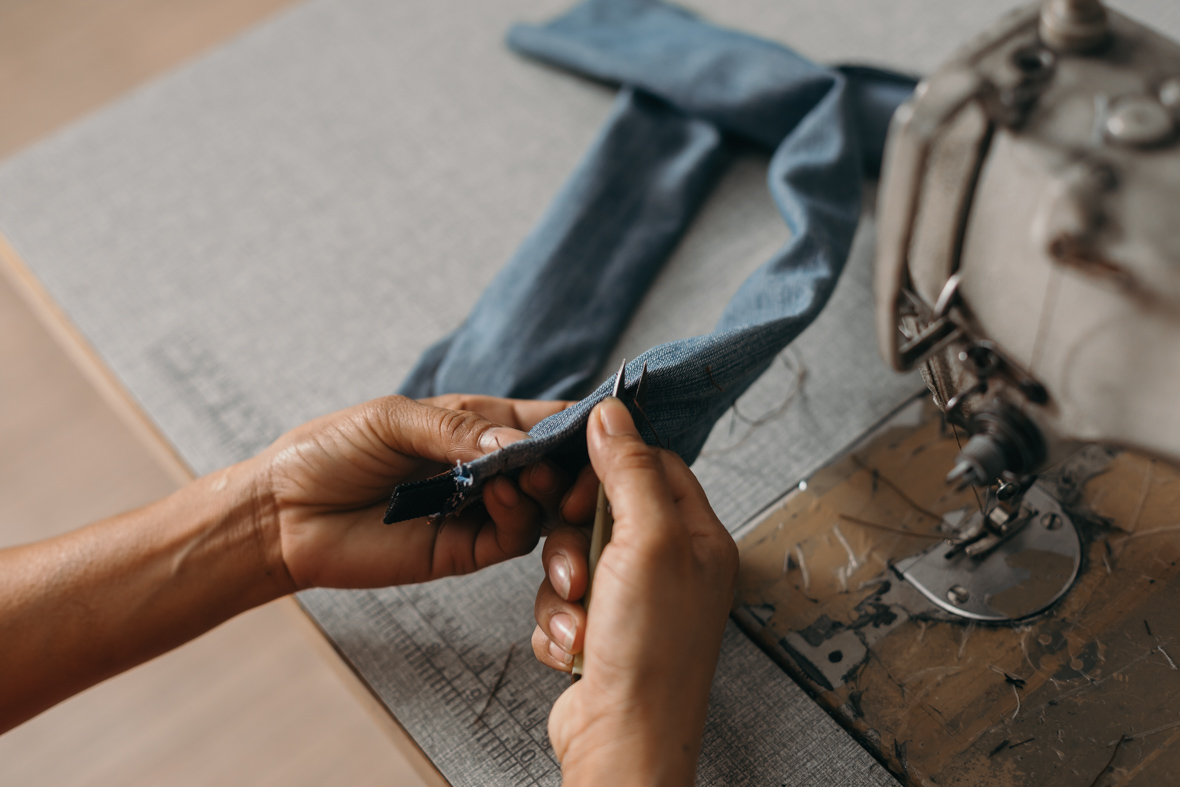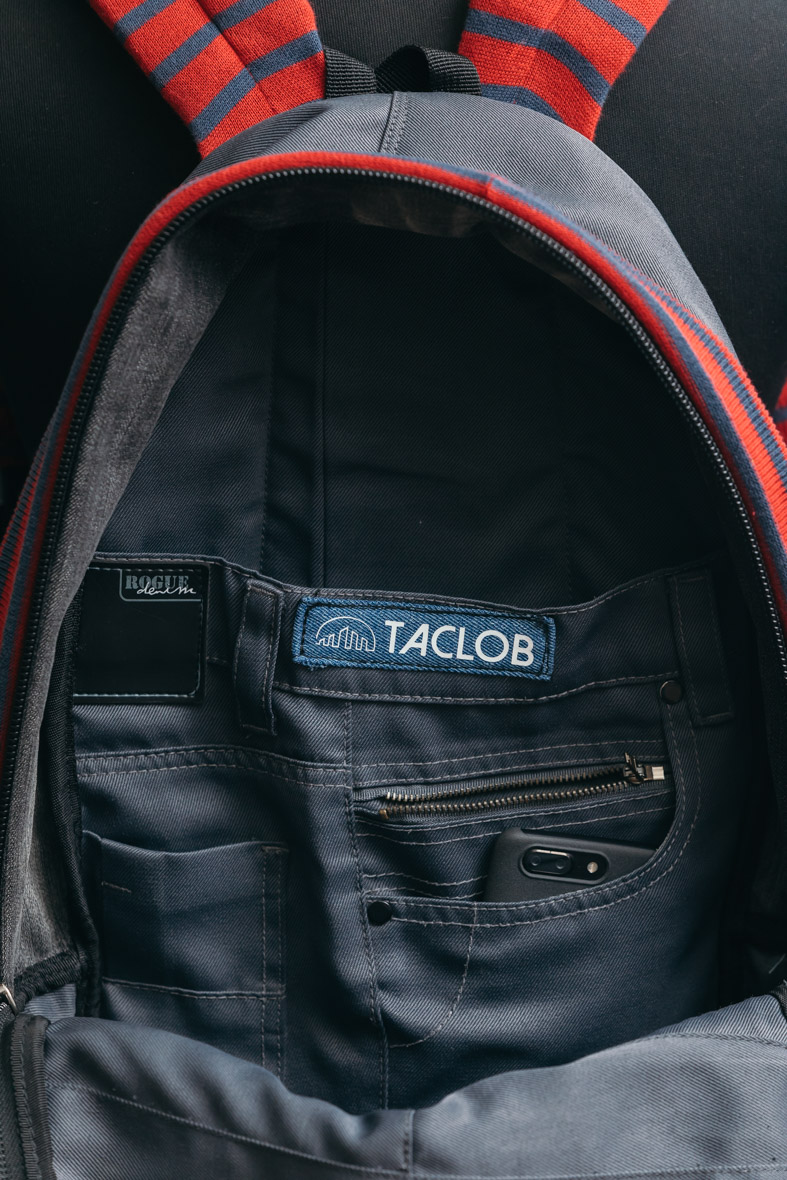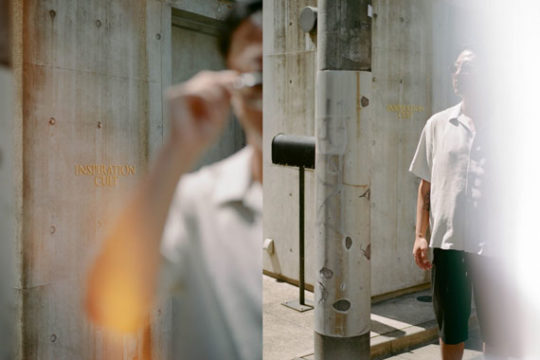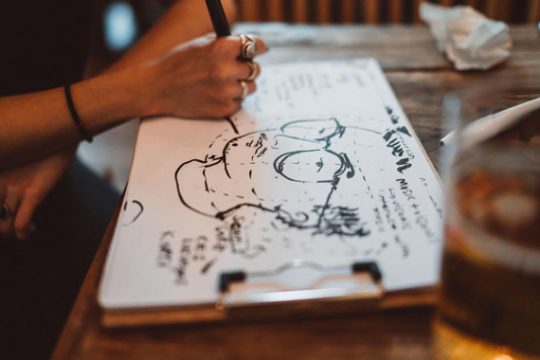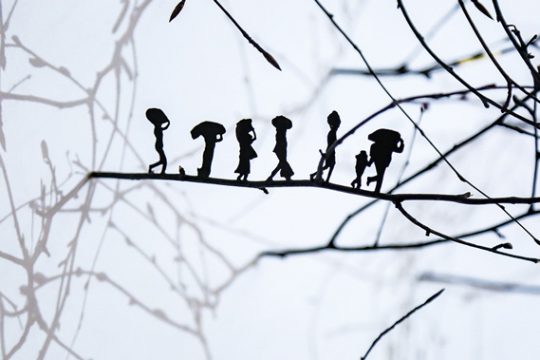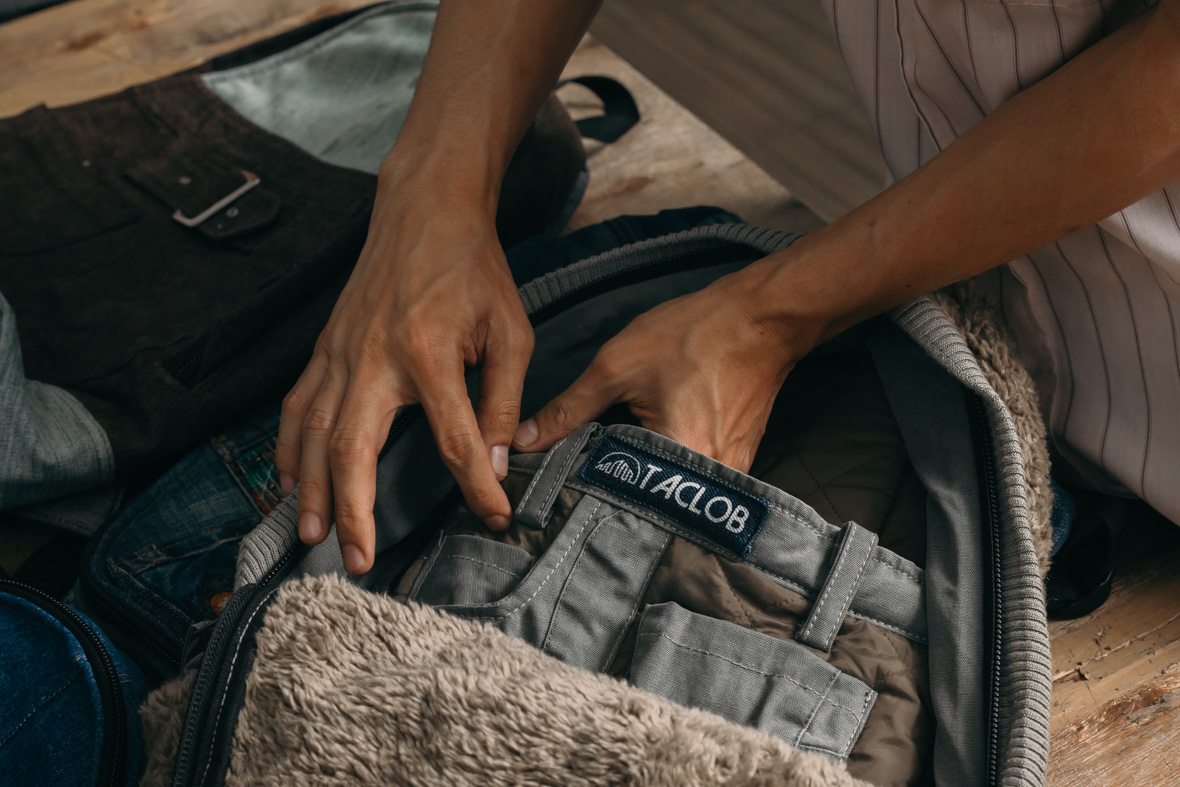
The Philippines is at the top of many lists: It’s one of the largest producers of plastic waste in the ocean, its capital is one of the cities most severely threatened by climate change in Southeast Asia, and in 2013 it took the record—still unbroken—for the world’s longest blackout. Of course, it takes government planning and international action to address these issues, but people can always start at home by changing how they consume personally. Use less, recycle more, buy locally. It’s a motto that should be a part of everyday decisions.
One company that takes this sort of philosophy to heart is Taclob, a Mandaluyong-based backpack maker. The business employs disaster survivors and disabled individuals to create stylish, upcycled bags made from repurposed vintage clothing.
菲律宾在很多排行榜上都是名列前茅:产生了最多海洋塑料废料的国家之一,首都城市是东南亚地区受到气候变化威胁最严重的城市之一。2013 年,菲律宾还发生过世界上时间最长的一次停电,这个记录仍然未被打破。当然,这些问题的解决需要政府规划和国际行动的共同努力,但人们也可以通过改变自己消费习惯,从自身做起。消耗更少,回收更多,坚持本地消费——把这几点变成日常决策的原则。
Taclob 正是以此为核心理念的一家公司。这家位于菲律宾曼达卢永(Mandaluyong)的手袋品牌雇用灾难幸存者和残疾人为员工,重新设计回收而来的废旧衣物,制作出时尚的手袋。
Taclob got its start in the southeastern city of Tacloban in the aftermath of Typhoon Haiyan in 2013. Founder Jourdan Sebastian witnessed the destruction firsthand through his involvement with Operation Airdrop, which used crowdfunding to deliver relief goods via helicopters and airplanes. He personally joined on some of those flights, and seeing the scale of devastation from above was a sobering experience. The typhoon had wiped out the entire city.
“It’s was like Transformers-type destruction,” he recalls, struggling to find words to describe what he saw.
在 2013 年台风海燕过后的东南部城市塔克洛本(Tacloban),Taclob 创立了。台风期间,创始人 Jourdan Sebastian 加入 Operation Airdrop,通过众筹利用直升机和飞机运送救灾物资,他参与了其中几次的飞行,亲眼目睹了这次台风所造成的灾难性后果。这次的台风彻底摧毁了整个城市,也警醒了 Jourdan。
“整座城市简直满目疮痍。”他回忆道,努力思索词语来形容他所目睹的灾难。
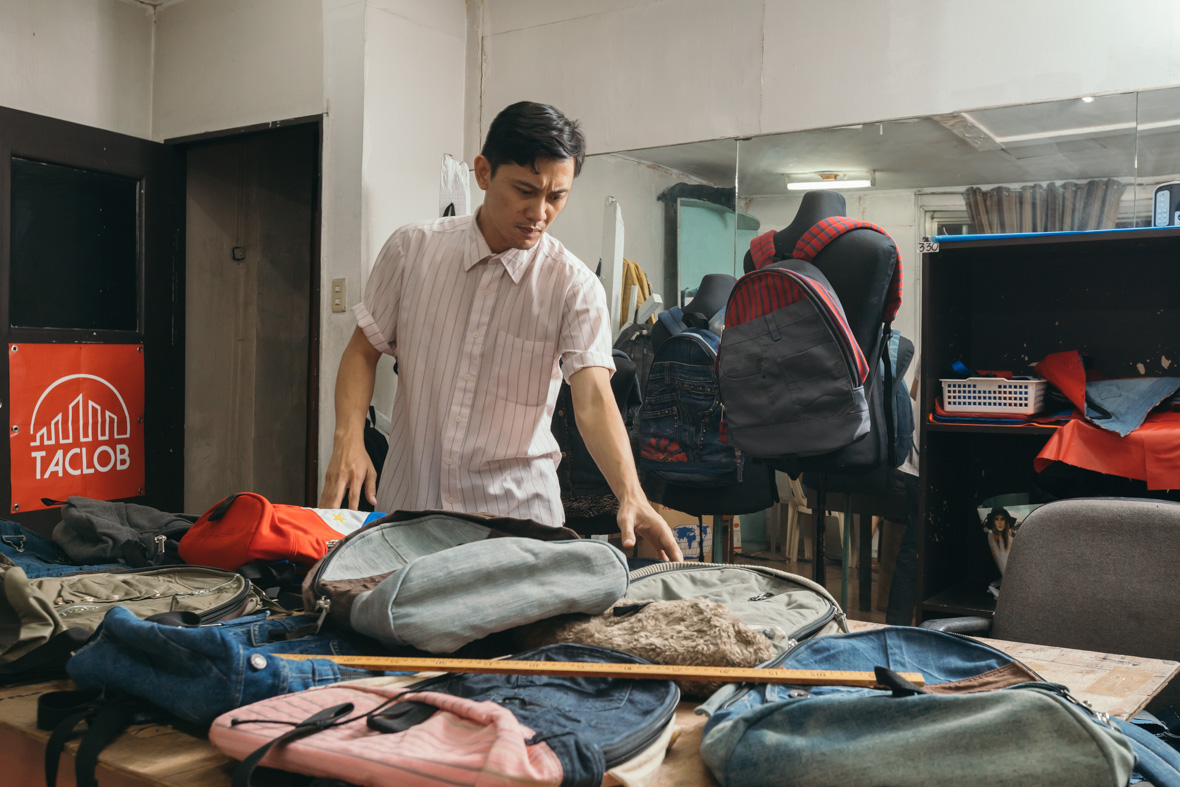
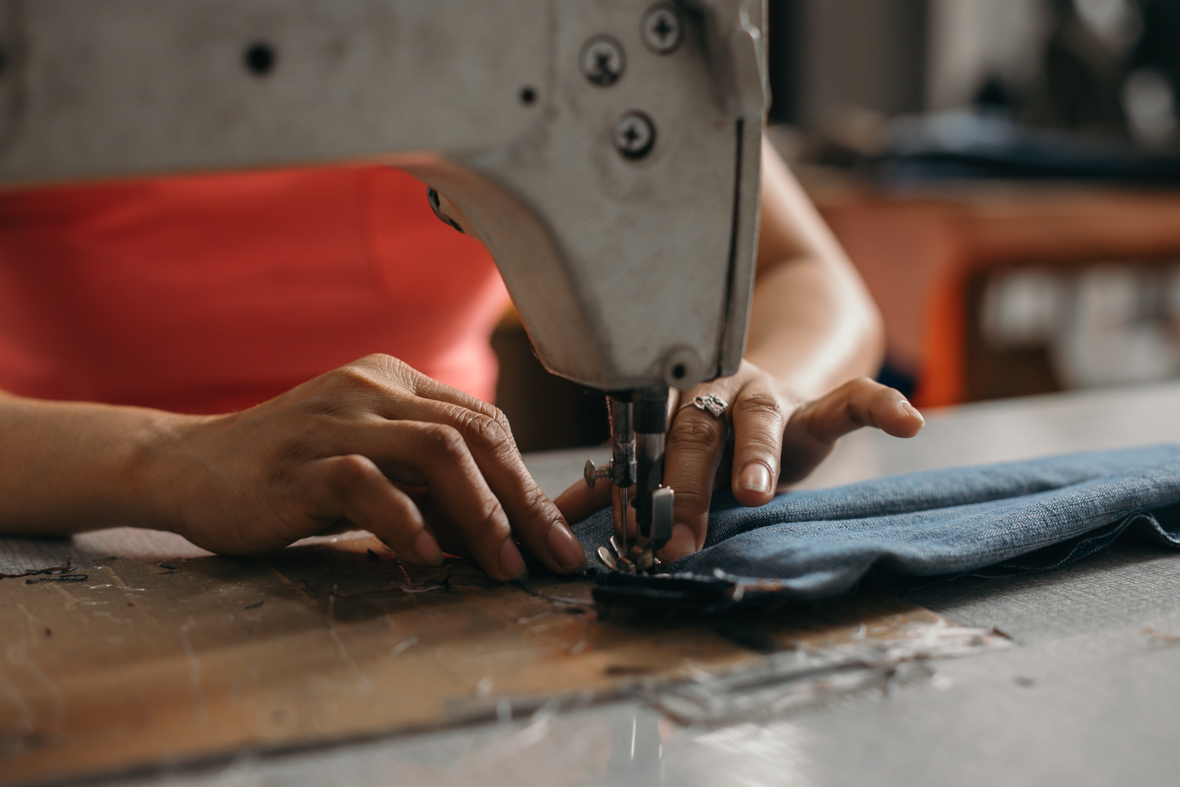
“When I went down and talked to the people, they thanked me for the goods and relief and money, but asked for help finding jobs,” Sebastian says. So he brought in a bagmaker who designed their first bag, the Compassion, and they trained local survivors to make bags and brought in equipment for them to do so.
“当我下飞机和人们交谈时,他们除了感谢我们带来的物资、救济和捐款之外,还希望我们能帮助他们找工作。”Jourdan 回忆道。为此,他找到一位手袋工匠,设计了他们的第一款手袋“Compassion”(意为怜悯、同情),同时训练当地幸存者制作手袋,为他们提供设备进行生产。
The Compassion bag was made from tarpaulin with a denim lining. “Disaster response creates a lot of garbage,” he says, explaining how he came upon the process of upcycling. “People give relief goods that are useless. One big container was full of winter clothes, wedding dresses, jeans that were too big for Filipinos. People don’t really put much thought into it, it’s like cleaning house for them. A lot of containers were just pure garbage. Since I couldn’t bring in materials because it was a broken city, I thought we should just use these materials. We went around to the survivors and were buying this stuff off them, which created added income.”
这款 Compassion 手袋采用防水布和丹宁布内衬制成。“救援活动也会带来垃圾。”Jourdan 讲述了他们开始升级回收的过程,“许多带来的救援物品都是没用的,譬如一大堆冬天的衣服、婚纱和牛仔裤,而且这些衣物的尺寸是对菲律宾人来说太大了。人们在捐助的时候未能认真思考一下,感觉他们更像是在清掉家里不需要的东西一样。很多运来的物资只是纯粹的垃圾。这已经是一座支离破碎的城市,我也没办法把物资再运进来,于是,我们就想不如就好好利用这些捐来的物料。我们找到幸存者,从他们那里买来这些物料,这样他们还能创造额外的收入。”
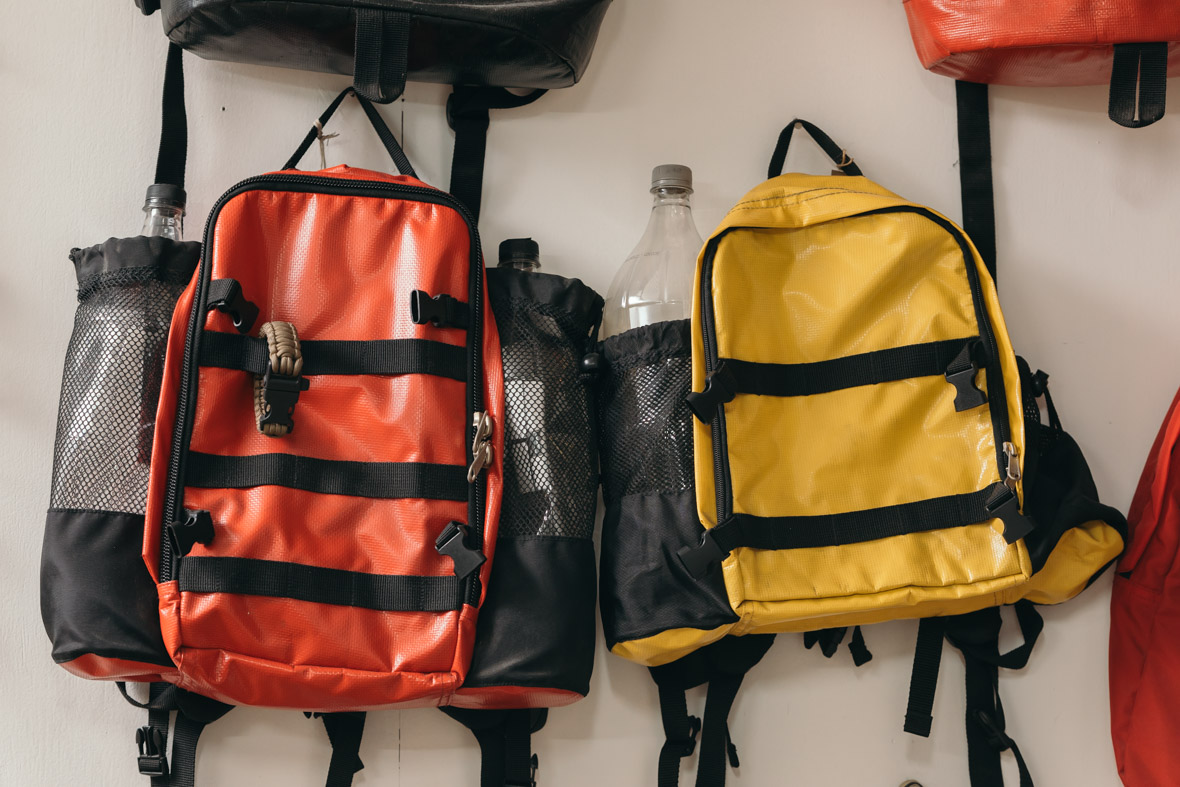
The facility ran for three years, until the city started to recover and their rent doubled. Sebastian was forced to shut production down, although he left behind their industrial sewing machines for the local bag makers.
工厂运行了三年,这座城市开始恢复,他们的租金涨了一倍。Jourdan 被迫关闭了工厂,但留下了工厂里的缝纫机给当地的手袋工匠使用。
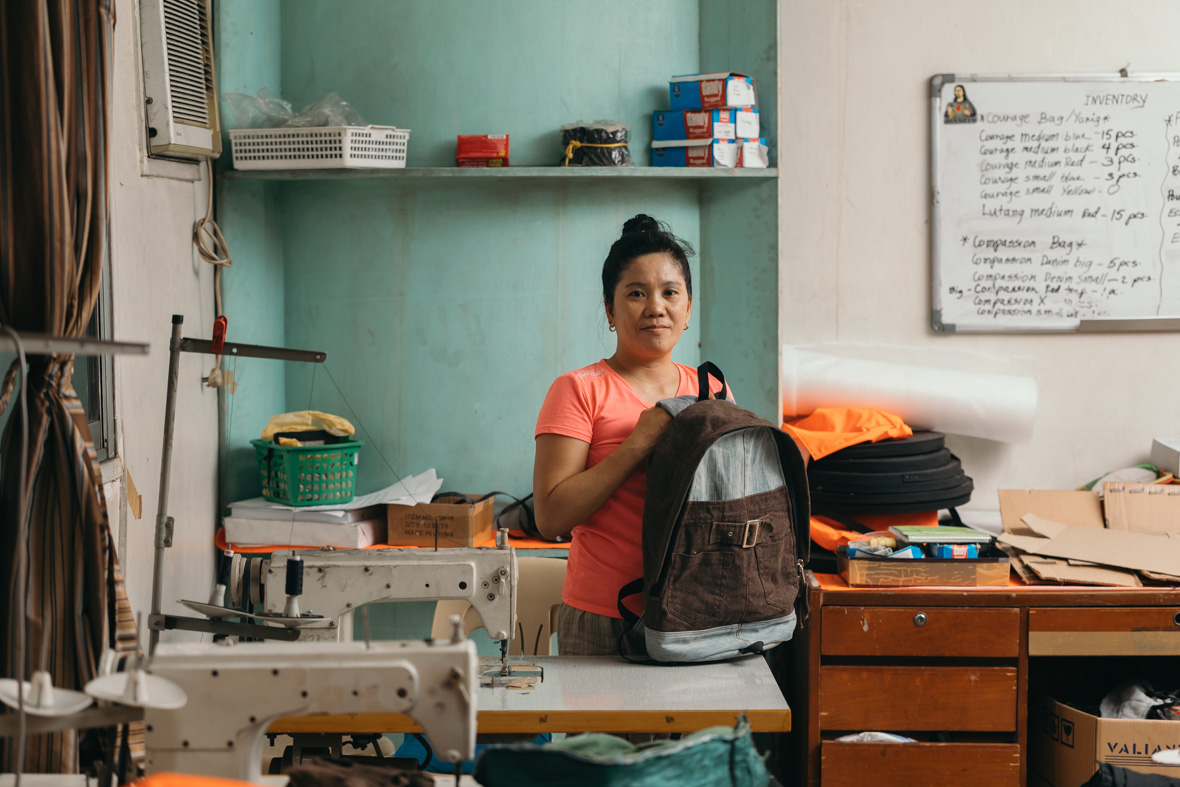
He brought one of the Tacloban bag makers, Jimalyn Comandante, back to Manila, where they opened a new studio in a space owned by Sebastian’s mother-in-law. It’s a nondescript second-story loft with a big window overlooking a commercial strip full of small eateries. The entrance is in the back, which also leads to a motel-style apartment complex.
I met Comandante inside the workshop, a space filled with Taclob bags and a line of sewing machines. Before the storm hit, she worked at a factory in Tacloban making sports bags, and with her know-how, she was brought on board to train the hired survivors. “I was homeless from the typhoon when I first met Sir Jourdan, she says.
Now she lives behind the Mandaluyong studio in Manila with her husband and daughter, and is currently the company’s sole full-time employee. “I built this around Jimalyn,” Sebastian says. “We take corporate orders too, making bags for NGOs. She trained three hearing-impaired employees who we bring on when we get big orders.”
Jourdan 带着塔克洛本的手袋工匠 Jimalyn Comandante 来到马尼拉,并在他岳母所拥有的大楼里开设了一间新工作室。那是一幢不起眼的二层阁楼,有一扇大窗户,在上面可以俯瞰楼下布满小餐馆的商业街。入口在后面,也通往一幢汽车旅馆式的公寓大楼。
我在工作室内和 Jimalyn 见面。这间工作室里面摆满了 Taclob 手袋和一排的缝纫机。在那场台风之前,她一直在塔克洛本当地一家工厂里制作运动包,因为技艺出色,她还被邀请去培训雇佣的幸存者。她说:“刚见到 Jourdan 的时候,我正因台风过境而流离失所。”
现在,她与丈夫和女儿一起住在马尼拉曼达卢永工作室后面,目前是该公司唯一的全职员工。Sebastian 说:“这个工作室是我以 Jimalyn 为核心设立的。我们也接受公司订单,为 NGO 组织制作包袋。她培训了三名听力受损的员工,收到大订单时,我们就会找他们帮忙。”

When Sebastian started the brand, he did so as a form of direct action, a way provide stability for those impacted by the storm. In its current, scaled-back capacity, it’s less a company than a philosophy. “I’m not selling bags anymore, I’m selling the system,” he says. Of course, Taclob does still sell bags—you can even order a customized bag made from your own materials—the goal now is to spread the message of upcycling.
One of the main hurdles to the spread of upcycling he sees is a stigma towards the products since they come from old clothes: “Vintage is big in Europe, where I get a lot of orders, but not really here. Here you buy thrift clothes mainly because you’re poor.”
Jourdan 创立这个品牌后,躬亲践行,来帮助受台风影响的人们恢复稳定的生活。 然而,以工作室目前的规模来说,与其说它是一家公司,不如说它是一个实践理念。“我不再是出售手袋,而是出售这个系统。”他说。当然,Taclob 仍然会卖手袋,你甚至可以用你自己的衣物预订一款定制手袋,但工作室现在的目标是宣传升级回收利用的信息。
在 Jourdan 看来,升级回收的主要障碍之一,是人们对这些用旧衣物打造的产品持有偏见,“购买二手物品的文化在欧洲很盛行,所以我们也收到了很多来自欧洲的订单。但这里却不同。在这,只有穷人才会买二手衣物。”
Unfortunately, he says, people don’t see a link between garbage and the severe storms brought on by climate change. “They see storm damage as an outcome of corruption, poor administration, illegal logging, and a lack of flood prevention structures. And that’s true. But there’s a carbon footprint when bags are made, there’s a carbon footprint when they’re thrown away. What if we kept all our bags, all our clothes, the plastic campaign tarpaulins politicians use? We could reuse all of that.”
可惜,人们并没有看到废弃垃圾与气候变化导致风暴之间的联系。“他们认为风暴造成灾害的原因是腐败、管理不善、非法采伐以及缺乏防洪结构。”
确实,这些都是一部分的原因。但人们也应该意识到,每制作一只手袋都会留下碳足迹,当它们被丢弃时又会产生碳足迹。如果我们将旧的袋子、衣服,还有政客们用过的塑料防水油布收集起来呢?我们就重复利用所有这些东西了啊。”


